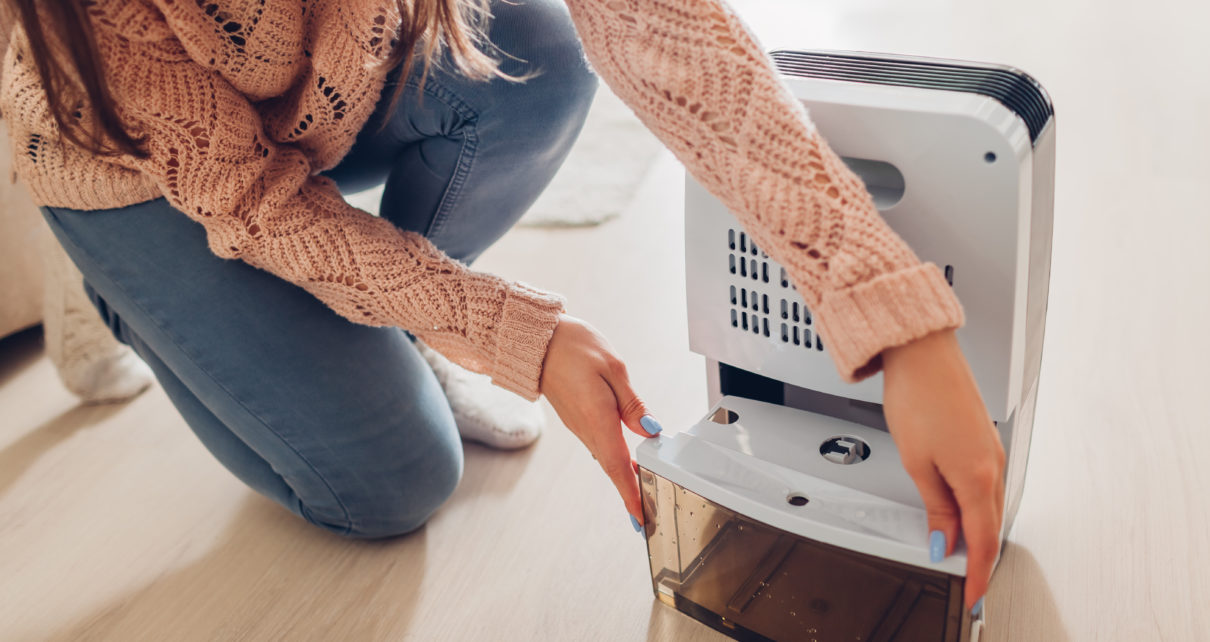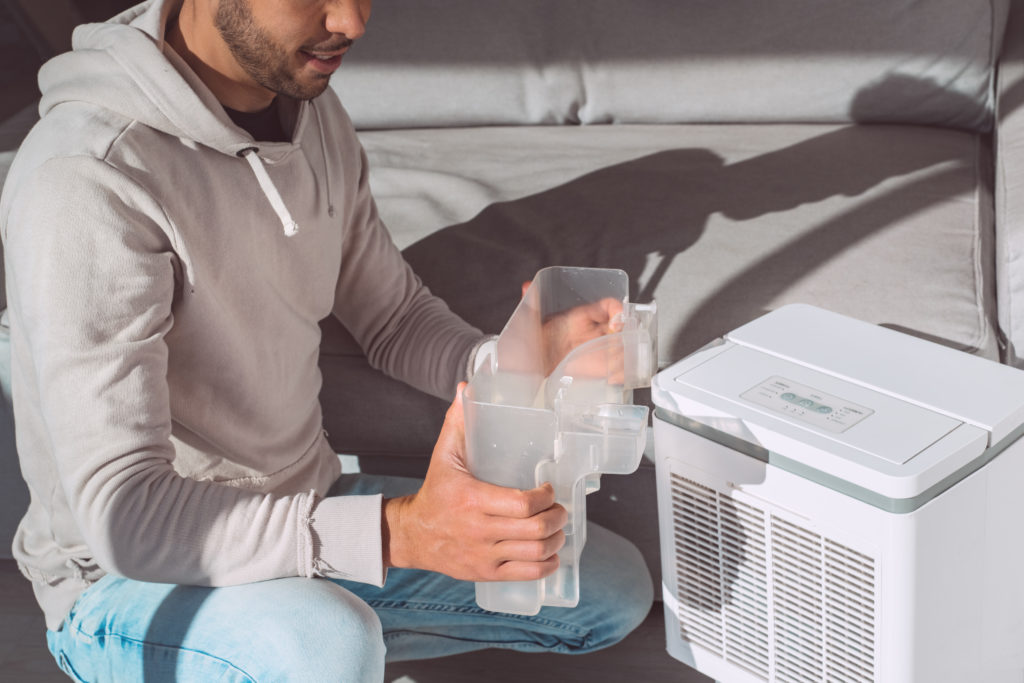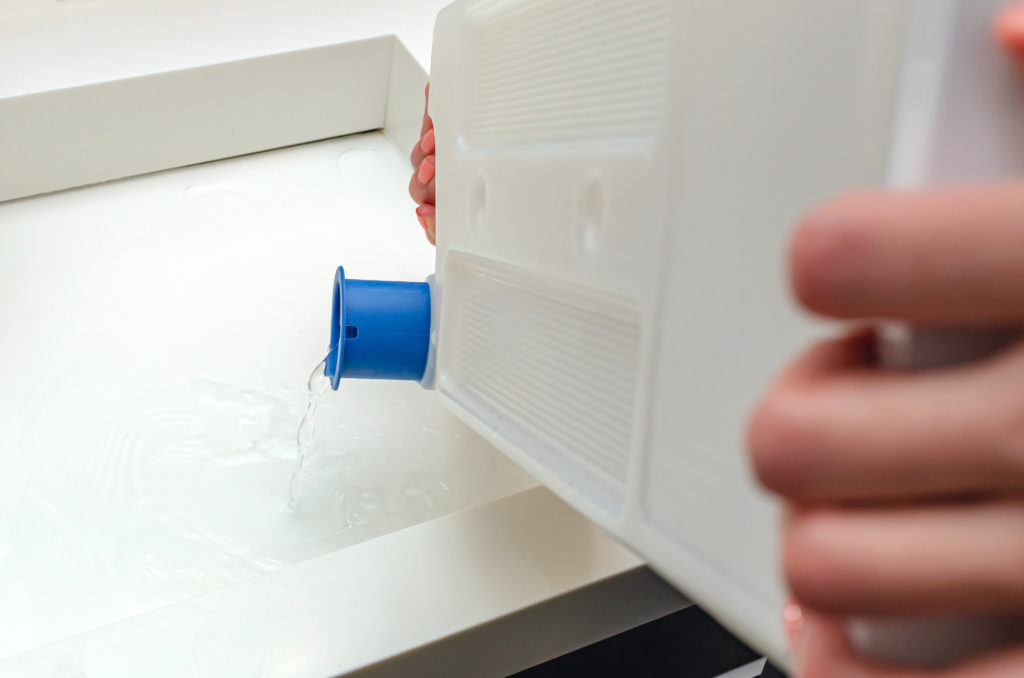
Water is a valuable natural resource that needs to be protected. There are plenty of ways to conserve water around the home, and maybe you’re already doing some of them. There may, however, be one significant water source you’ve overlooked: the air itself.
If you live in a humid area, a dehumidifier is a must-have. Dehumidifiers help remove excess moisture from the air which can contribute to dust, mold, and mildew. But what do you do with all the water your dehumidifier collects? Can you drink water from a dehumidifier?
In this article, we’ll answer this important question and explore other ways you can use the water from your dehumidifier. If you’re in the search for a new dehumidifier, we’ve researched and created some of the best dehumidifiers on a shortlist for you.
How Do Dehumidifiers Work?
Water is water, but before you pour yourself a tall glass from your dehumidifier tank it’s important to know whether it’s safe. To start, let’s talk about how a dehumidifier works.
Dehumidifiers operate using the same basic principles as air conditioners. They use fans to pull moisture-heavy air from the environment, passing it over chilled coils. As the air cools, it loses the ability to hold moisture which causes condensation to form. The water droplets trickle down into a collection tank and the dehumidifier reheats the air and blows it back into the environment.
Most dehumidifier can be programed to maintain a specific level of humidity. When the humidity exceeds that level, the dehumidifier kicks on. Once the proper level has been achieved, it turns off. Dehumidifiers can collect between 30 and 70 pints of water per day – about 2 to 5 gallons.
Is Dehumidifier Water Safe to Drink?
Running a dehumidifier all the time can significantly reduce issues caused by excess moisture, but what do you do with all that water once it’s removed from the air? Humidifiers are equipped with a tank that collects the water or you can activate the pump and run a hose directly from the unit into a floor drain.
Connecting a dehumidifier directly to a floor drain saves you the hassle of having to empty the tank every day but think about what you could be doing with all that water. It might be tempting to pour it directly into a pitcher and stick it in the fridge, but that would be a mistake. Even if you filter it first, drinking dehumidifier water generally isn’t a good idea.

Think about how the water makes its way from the air into the collection tank. Those cold coils turn water vapor from the air into liquid water and the condensate collects in the tank. Concerns about the cleanliness of the tank itself aside, the Environmental Protection Agency (EPA) warns that stagnant condensate can collect biological contaminants like algae, mold, and mildew.
While the way in which dehumidifiers remove water from the air may seem similar to the process of distillation which yields fresh, clean water, it is not the same. Distillation occurs when water is boiled. As the water evaporates into steam, it leaves behind contaminants and minerals. While dehumidifier water is free from minerals, it is never boiled so it may still contain contaminants.
Alternative Dehumidifier Water Uses
Dehumidifier water contains airborne particles and other contaminants which can be harmful to humans and pets, but that doesn’t mean you have to pour it down the drain. There are still a number of ways you can use the water from your dehumidifier around the house.

Here are some alternative ways to use dehumidifier water:
- Use it to start a hydroponic garden
- Mix it with regular tap water to water indoor/outdoor plants
- Make homemade cleaning solutions
- Use it in your mop bucket, iron, or steamer
- Pour it into your toilet tank to use for flushing
- Use it in your car’s radiator tank
It may seem like your dehumidifier is a great source for extra water but be careful how you use it. Dehumidifier water is generally not safe to drink, though there are ways to filter it. Generally speaking, however, it may be safest to use it for one of the alternative ideas above.
Frequently Asked Questions
Do dehumidifiers collect distilled water?
No. While the process dehumidifiers use to remove moisture from the air is similar to distillation, the water is never boiled. It is devoid of minerals but may still contain harmful contaminants.
Is dehumidifier water drinkable if filtered?
Household water filters generally remove heavy metals, harmful chemicals, and organic compounds which can affect the taste of your water. That being said, they may not remove everything. If you’re dead set on drinking the water from your dehumidifier, boil it at 165°F for 20 minutes or run it through a Berkey water filter or LifeStraw to make it potable.
Is water from a dehumidifier contaminated?
Even if you clean the dehumidifier collection tank regularly, the water isn’t clean enough for you to drink safely. Because the water is condensed and collected, it can contain pathogens and airborne particles.
Can dogs drink water from a dehumidifier?
No. Drinking dehumidifier water is not recommended for humans or for pets. Not only can the water contain contaminants, but it may sit stagnant in the tank for long periods of time which can lead to the development of mold or bacteria.
How much water should a dehumidifier collect in a day?
It depends on the humidity level in your home and the setting on the dehumidifier. Most dehumidifiers can remove up to 70 pints of water per day, though larger models may remove more.
Additional Dehumidifier Problems and Solutions
